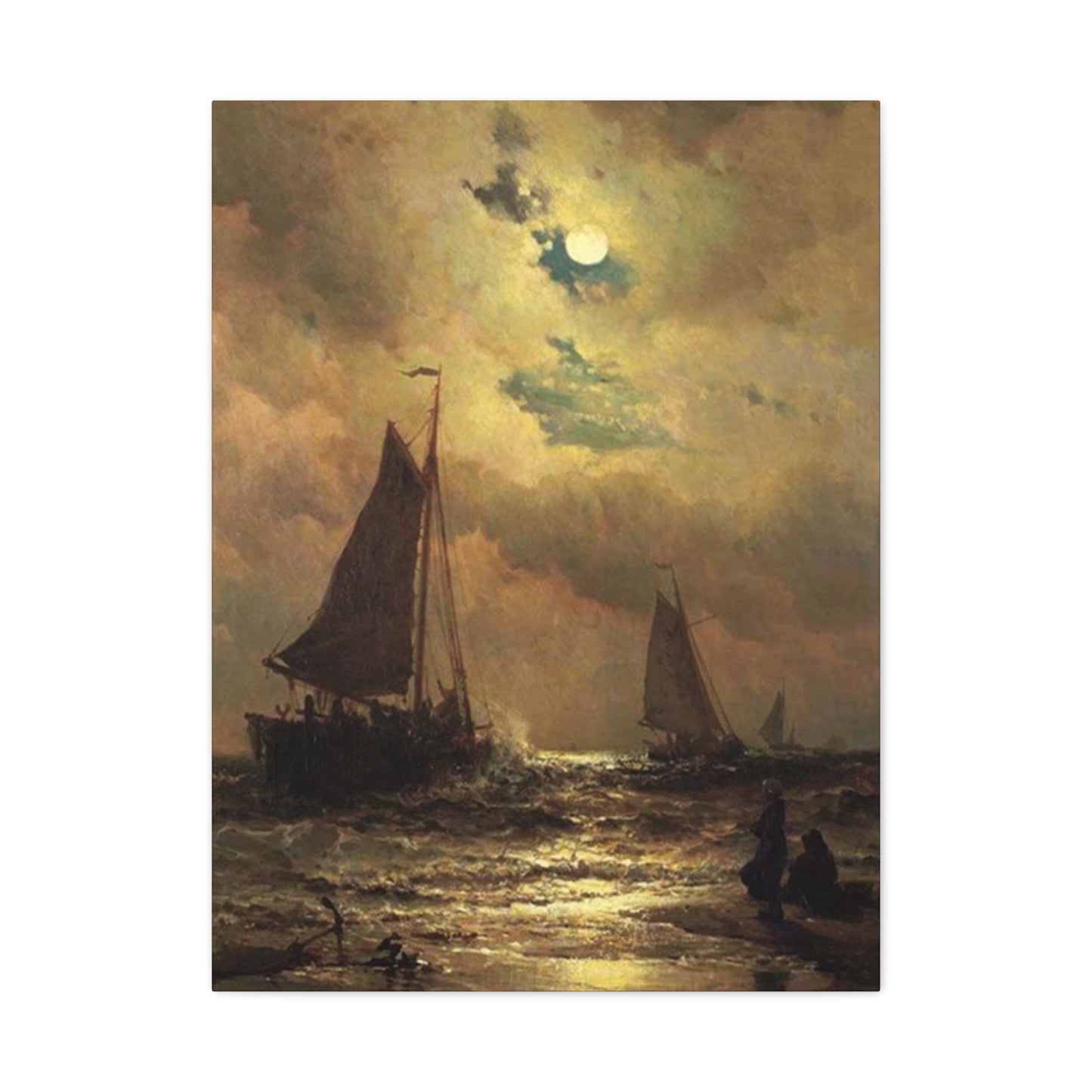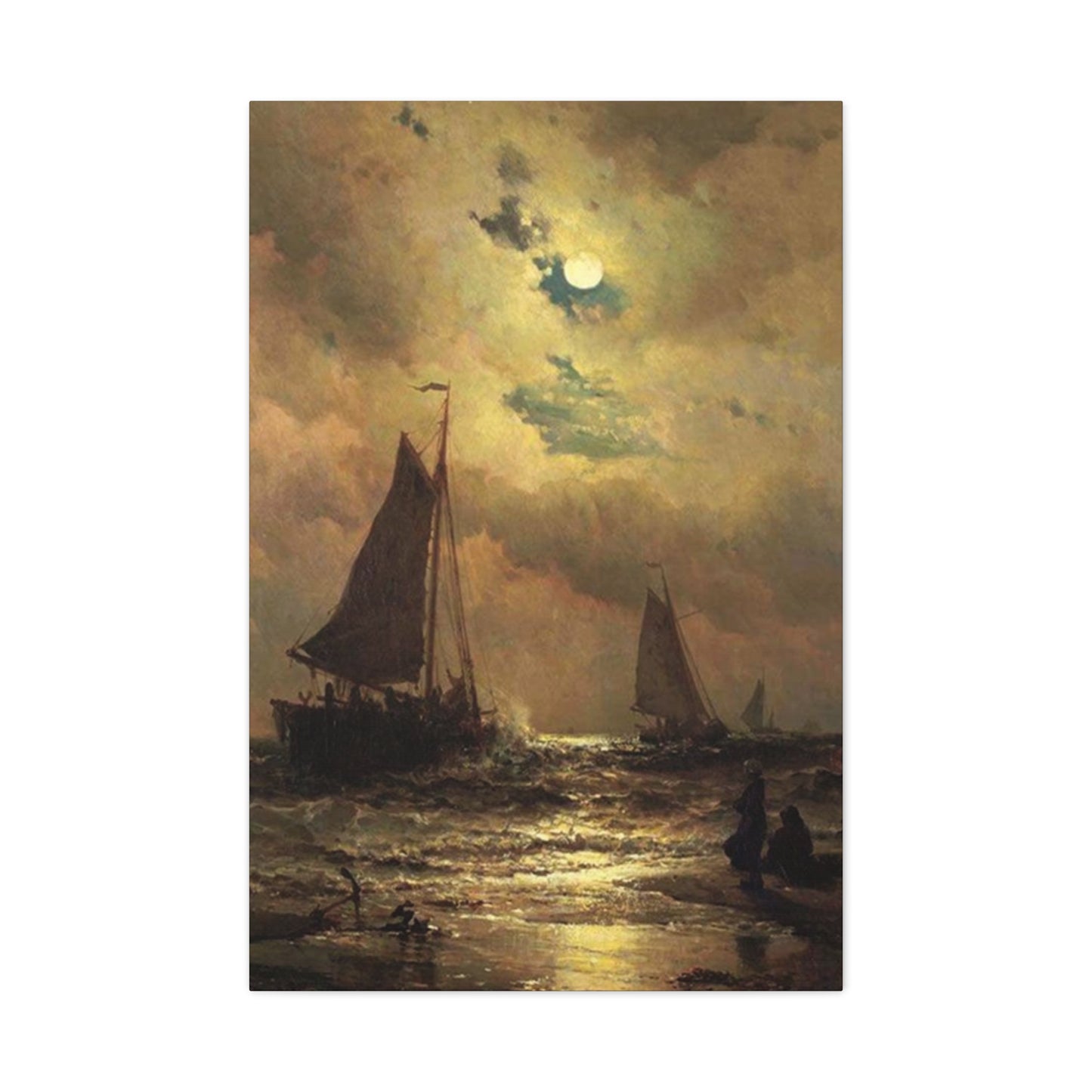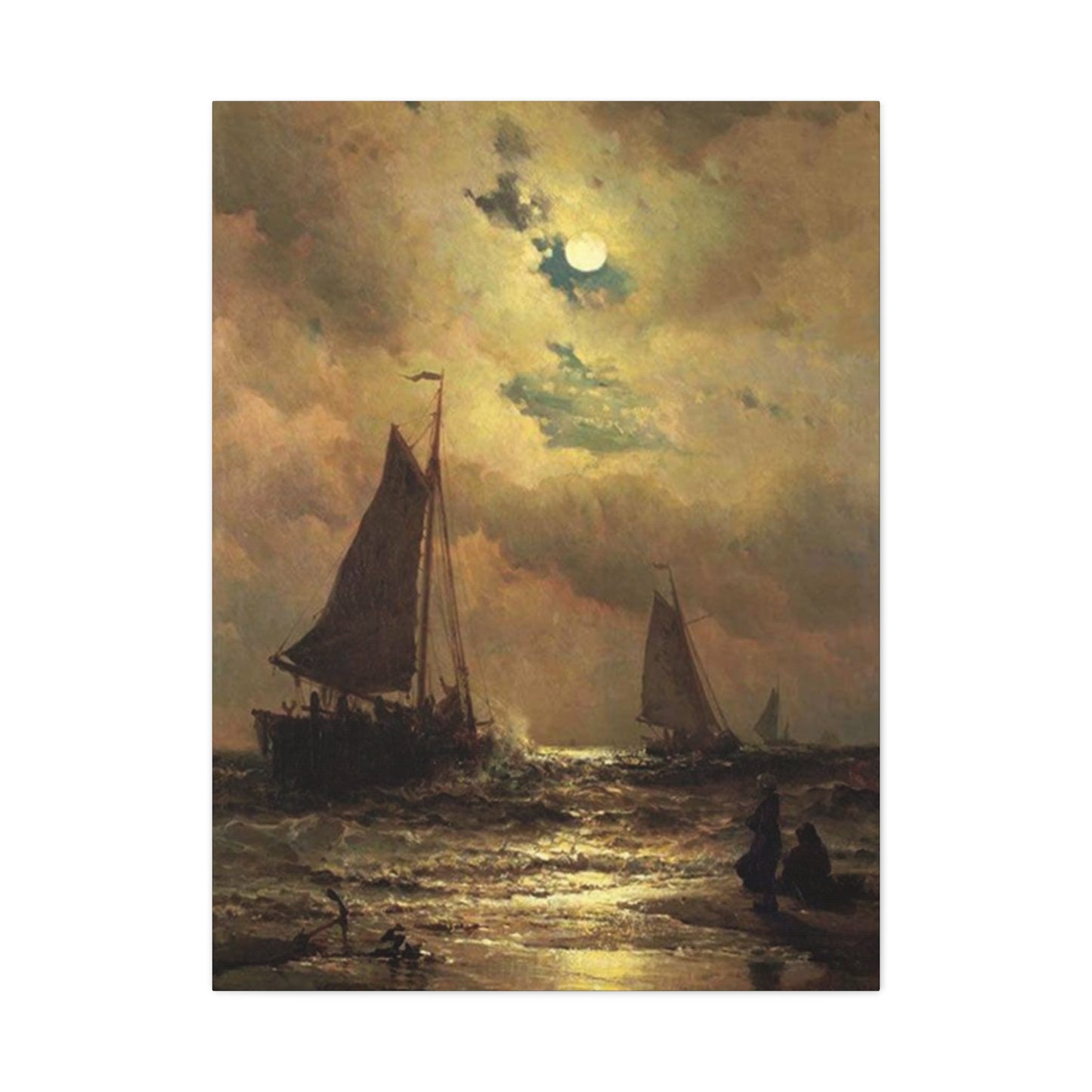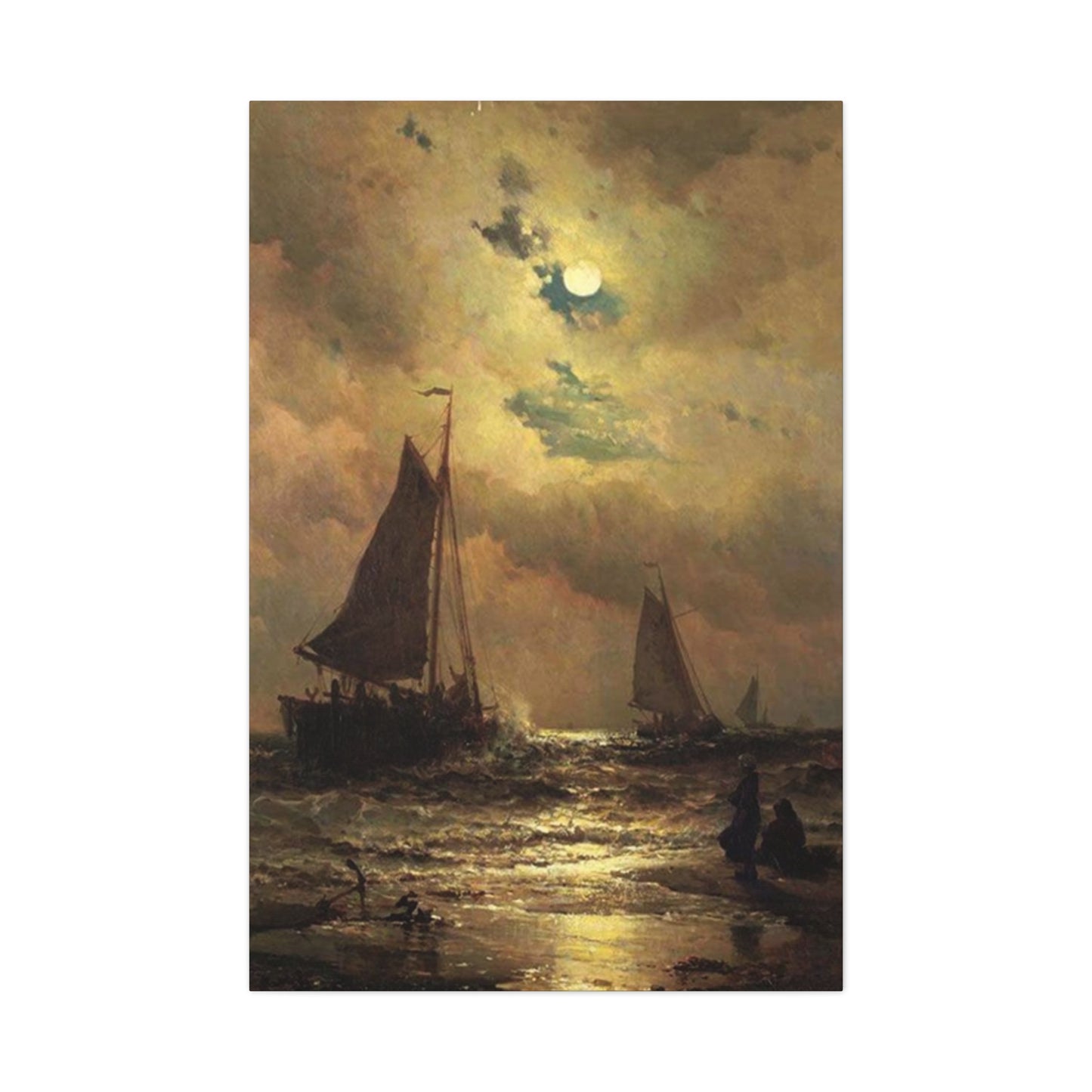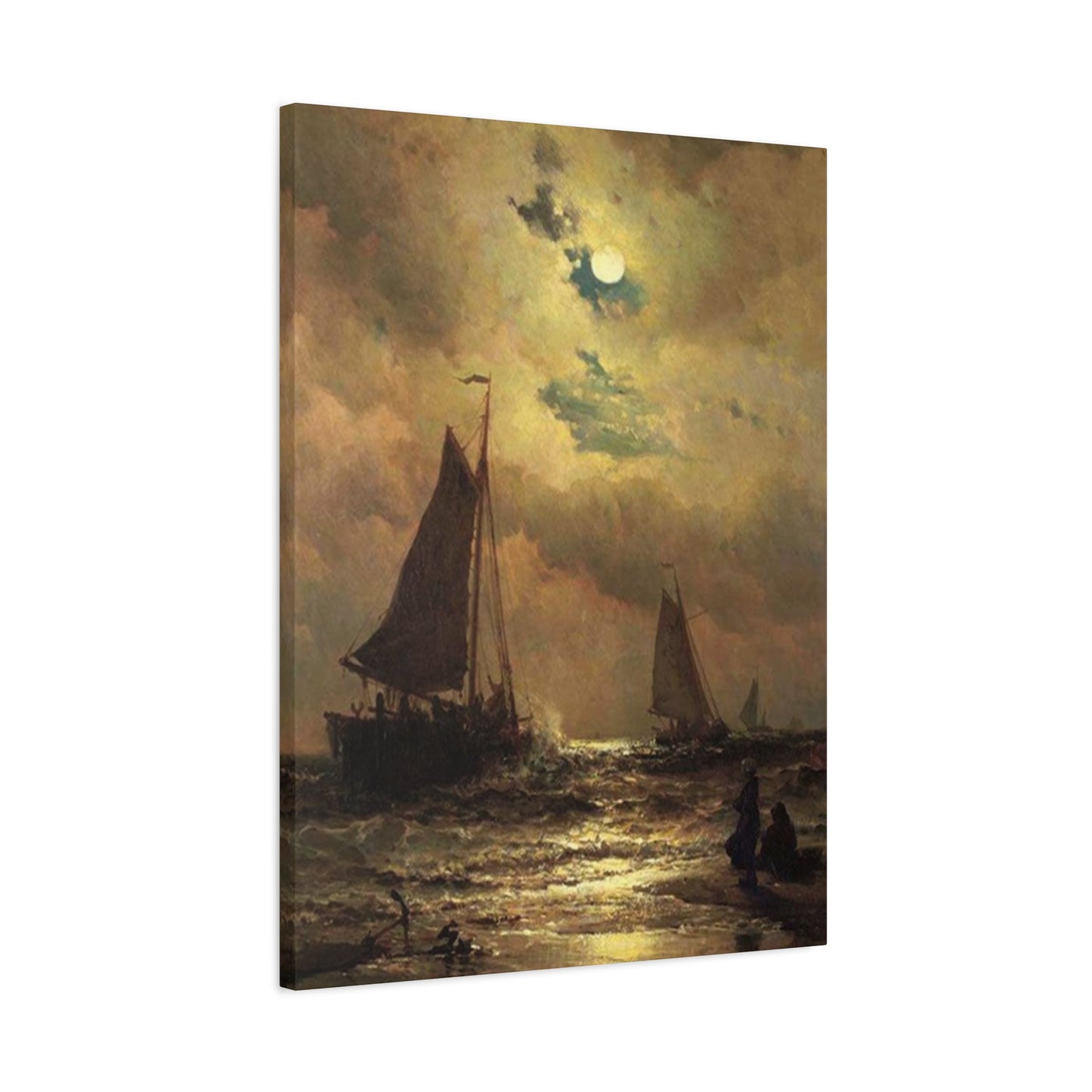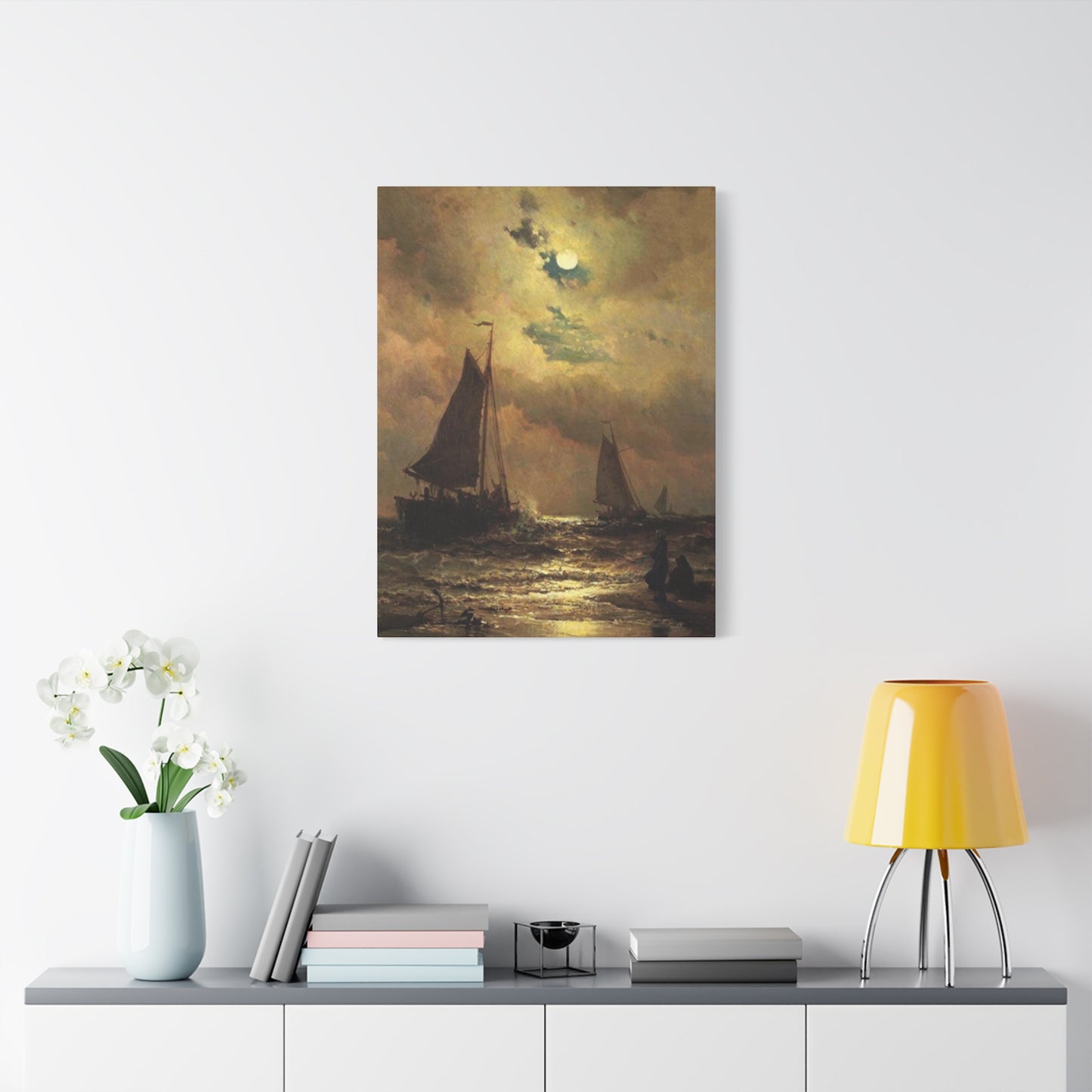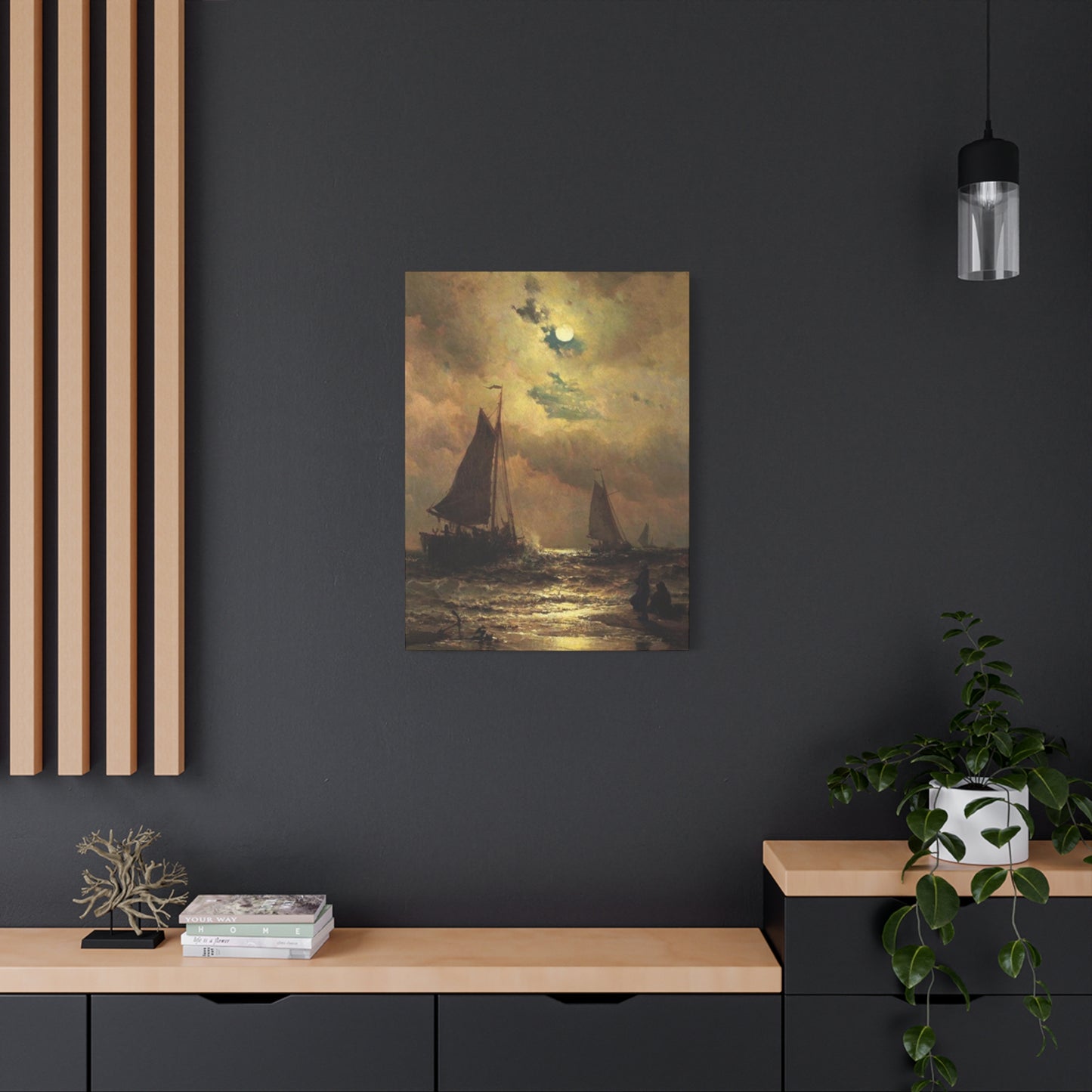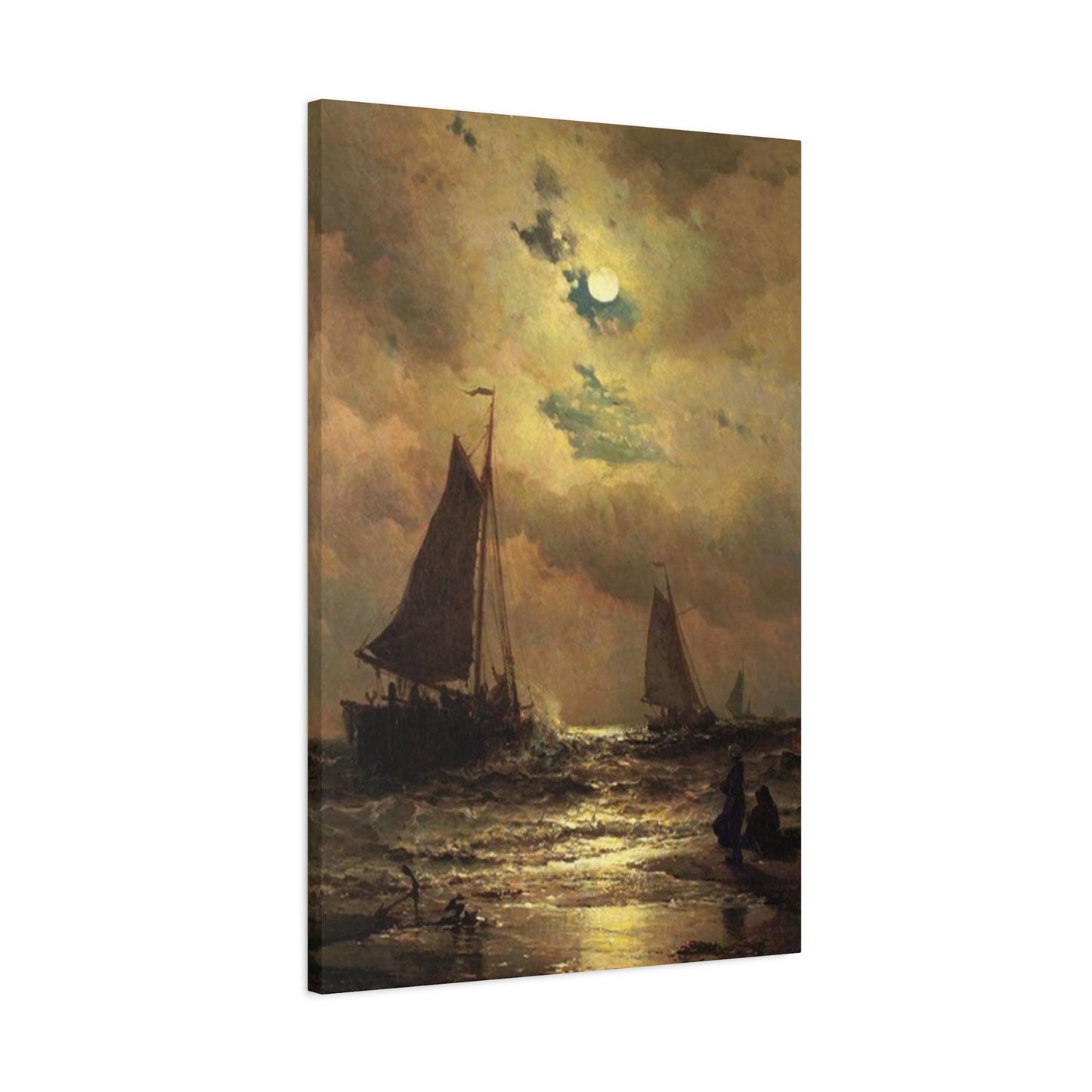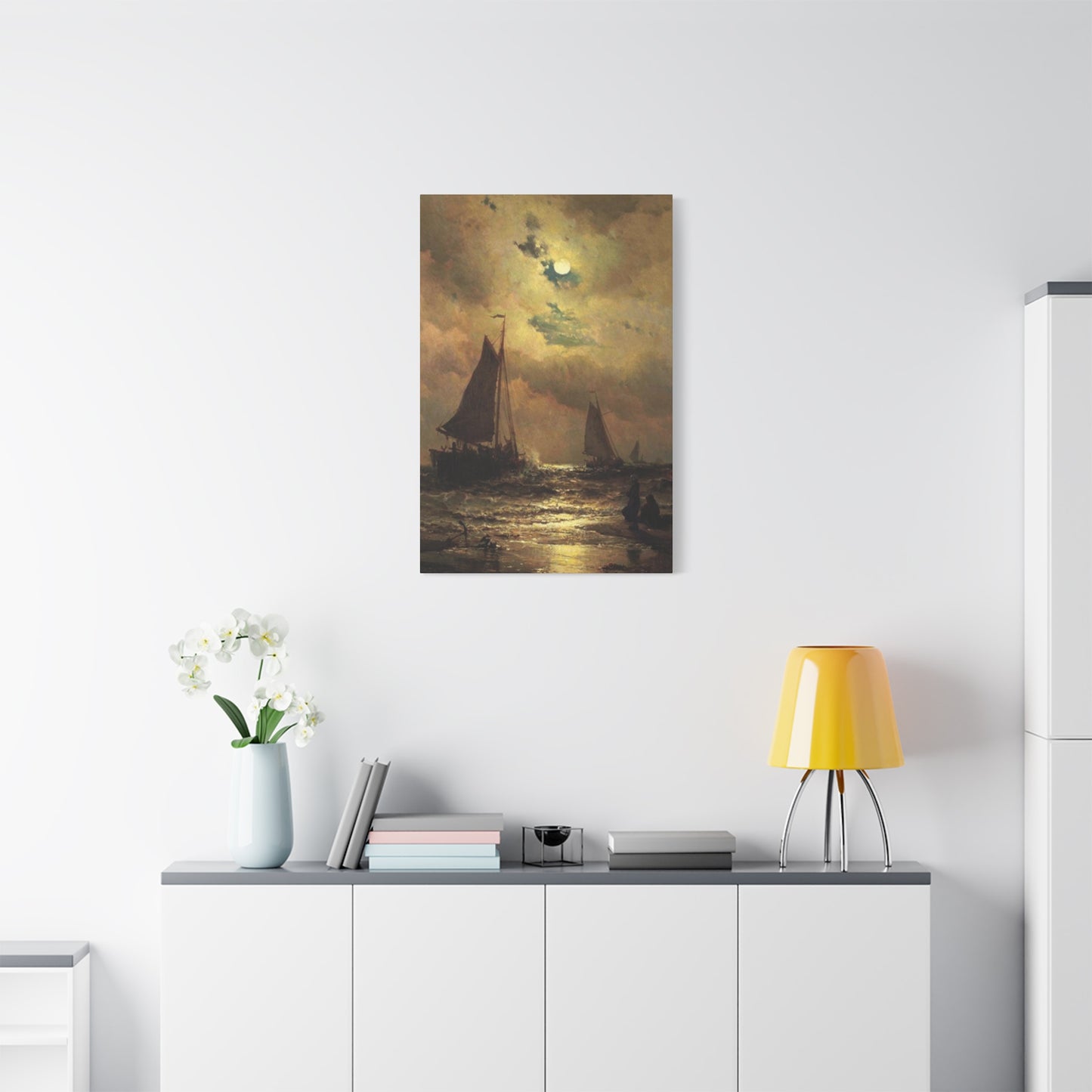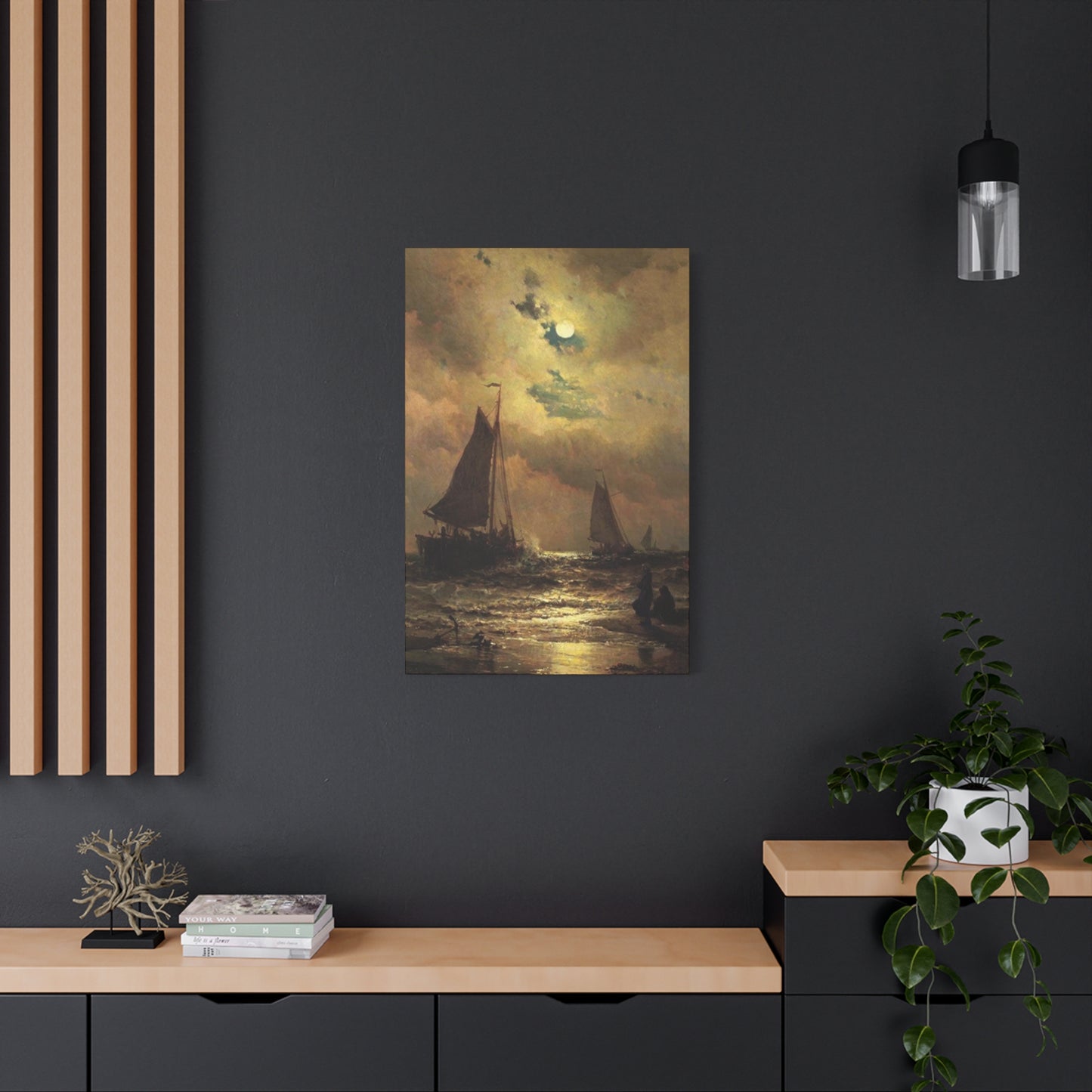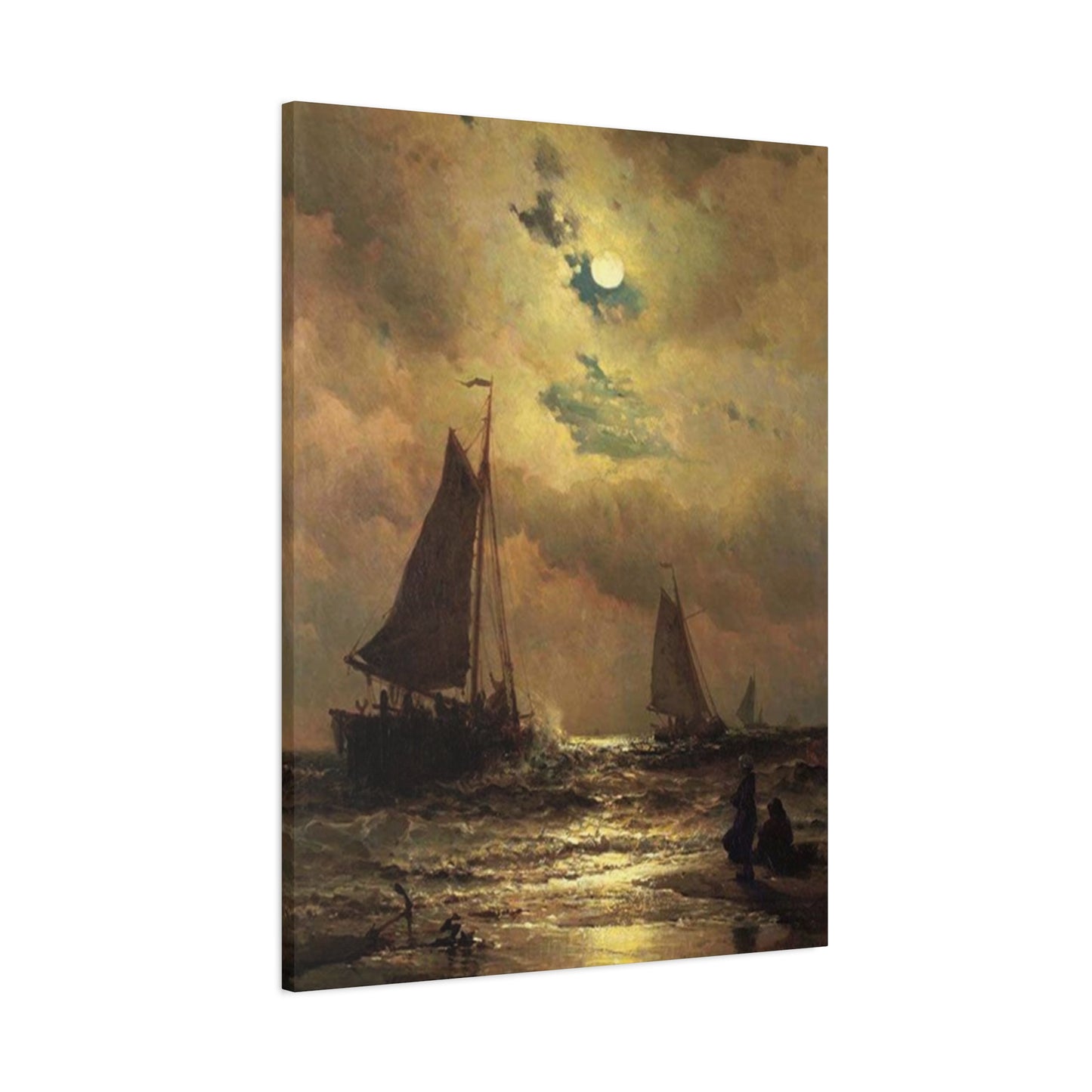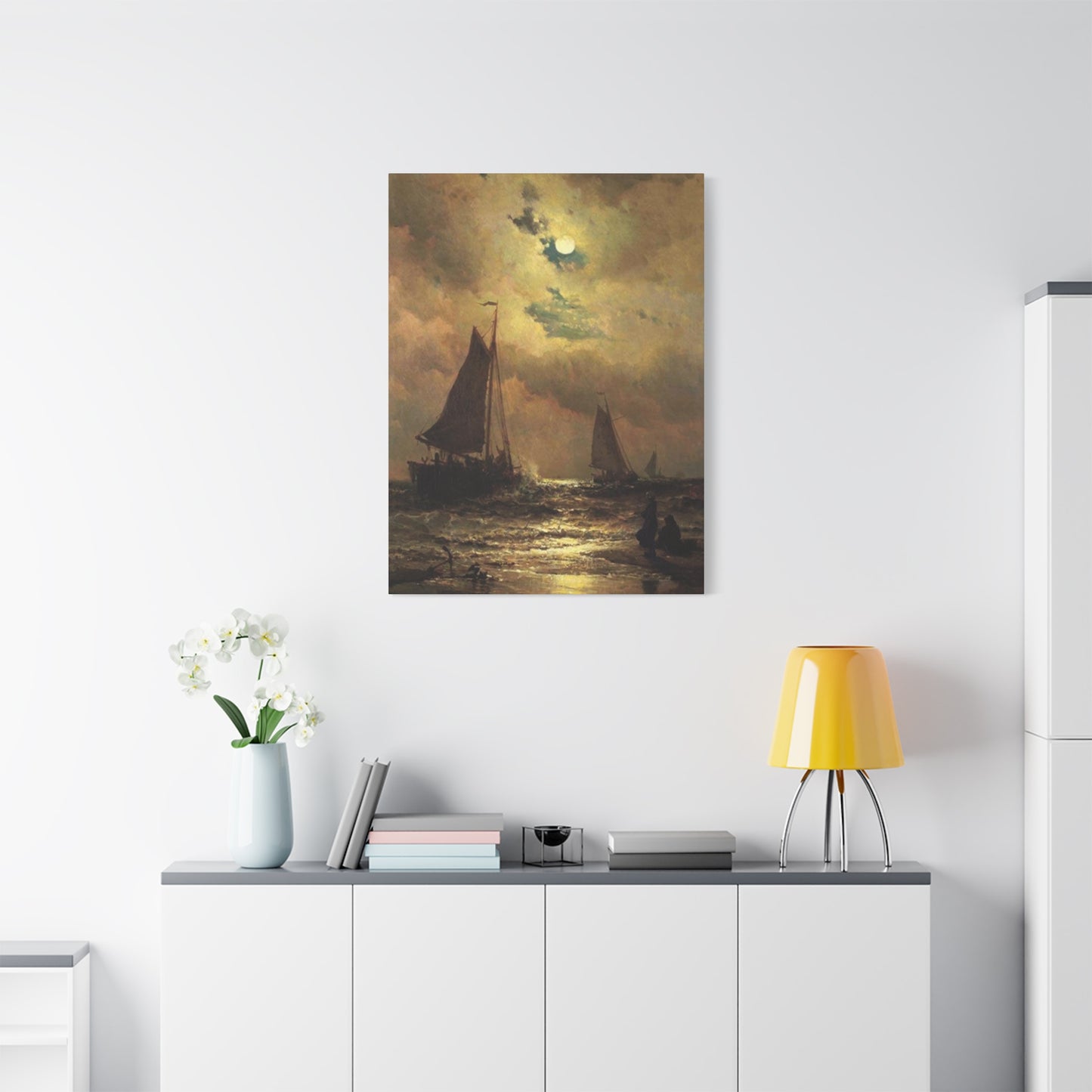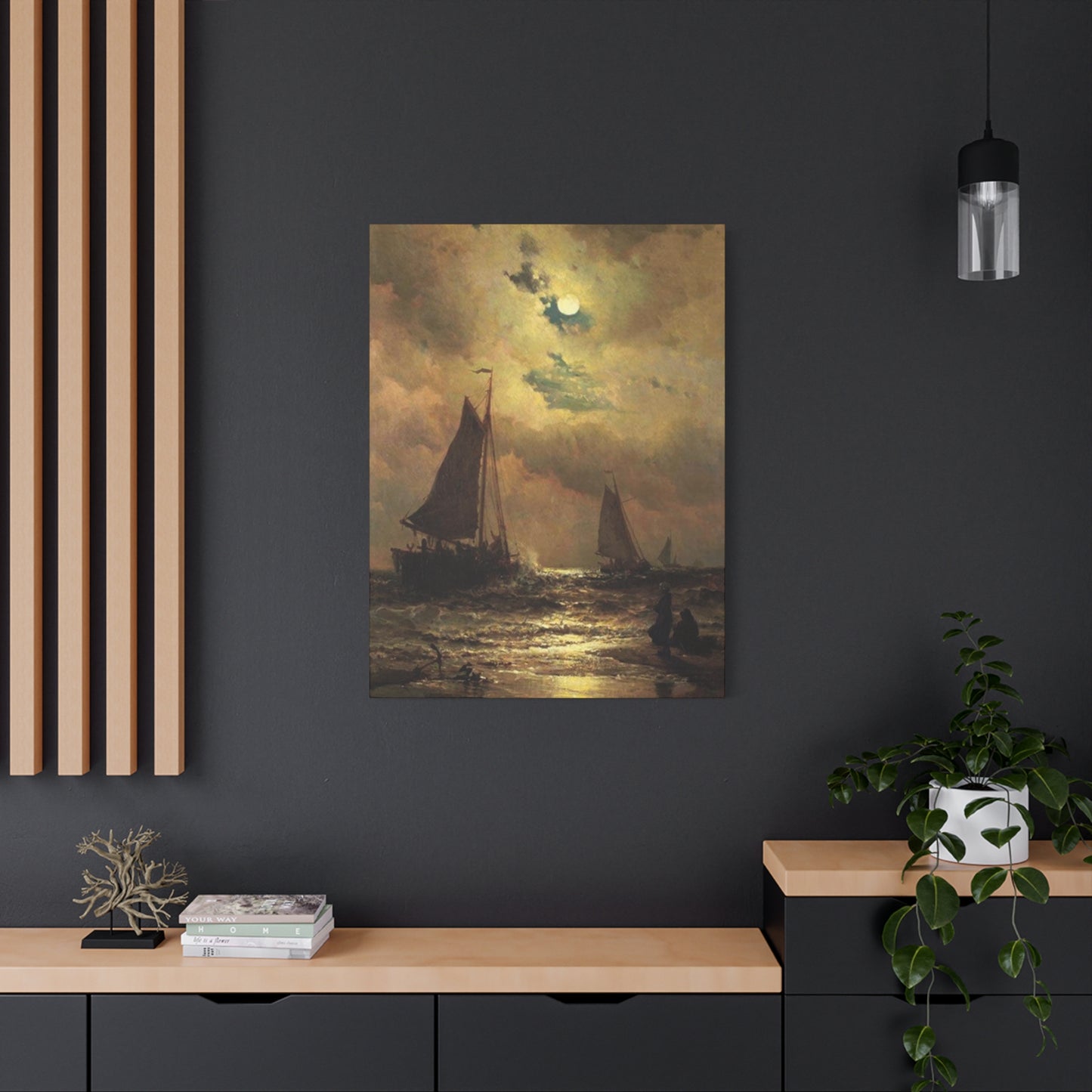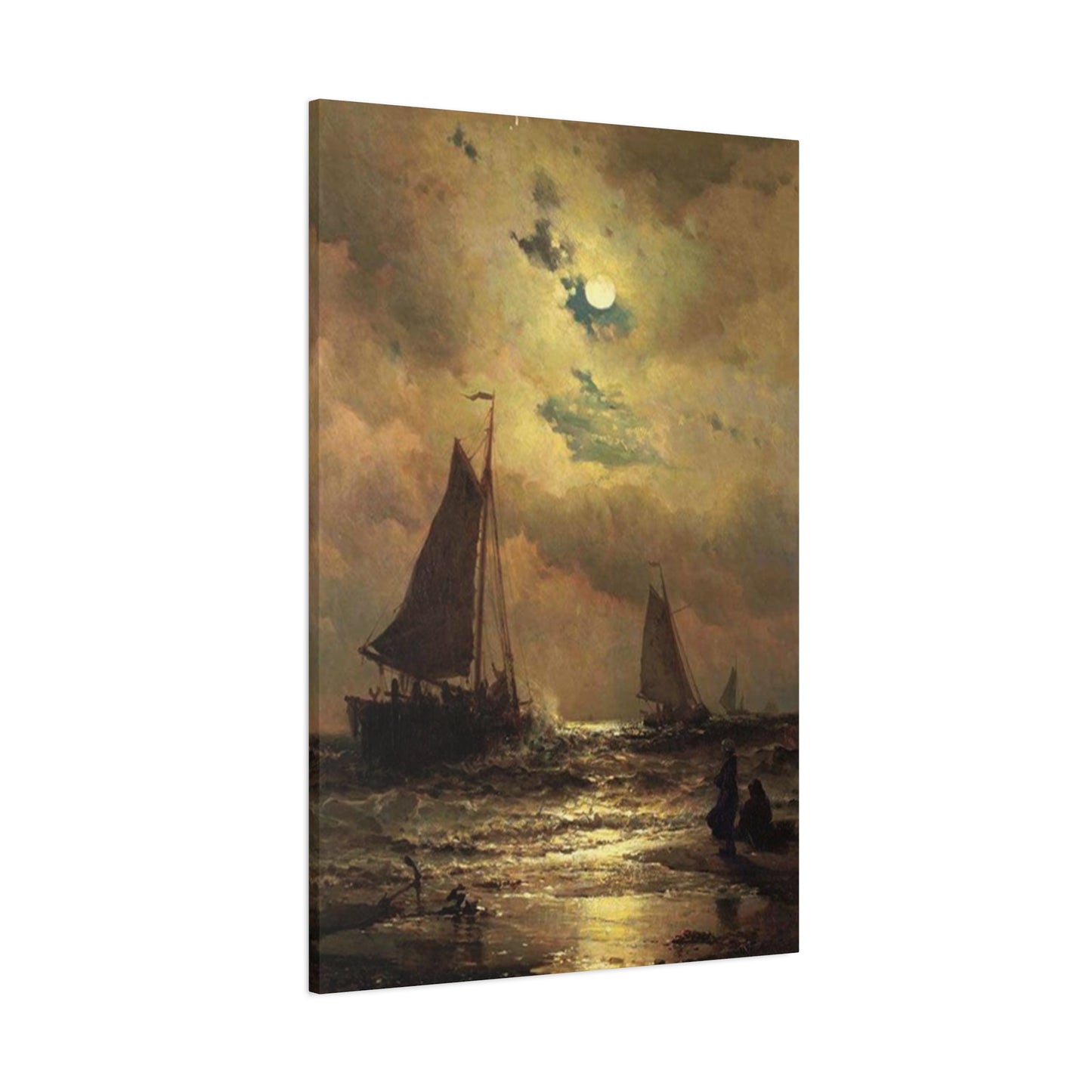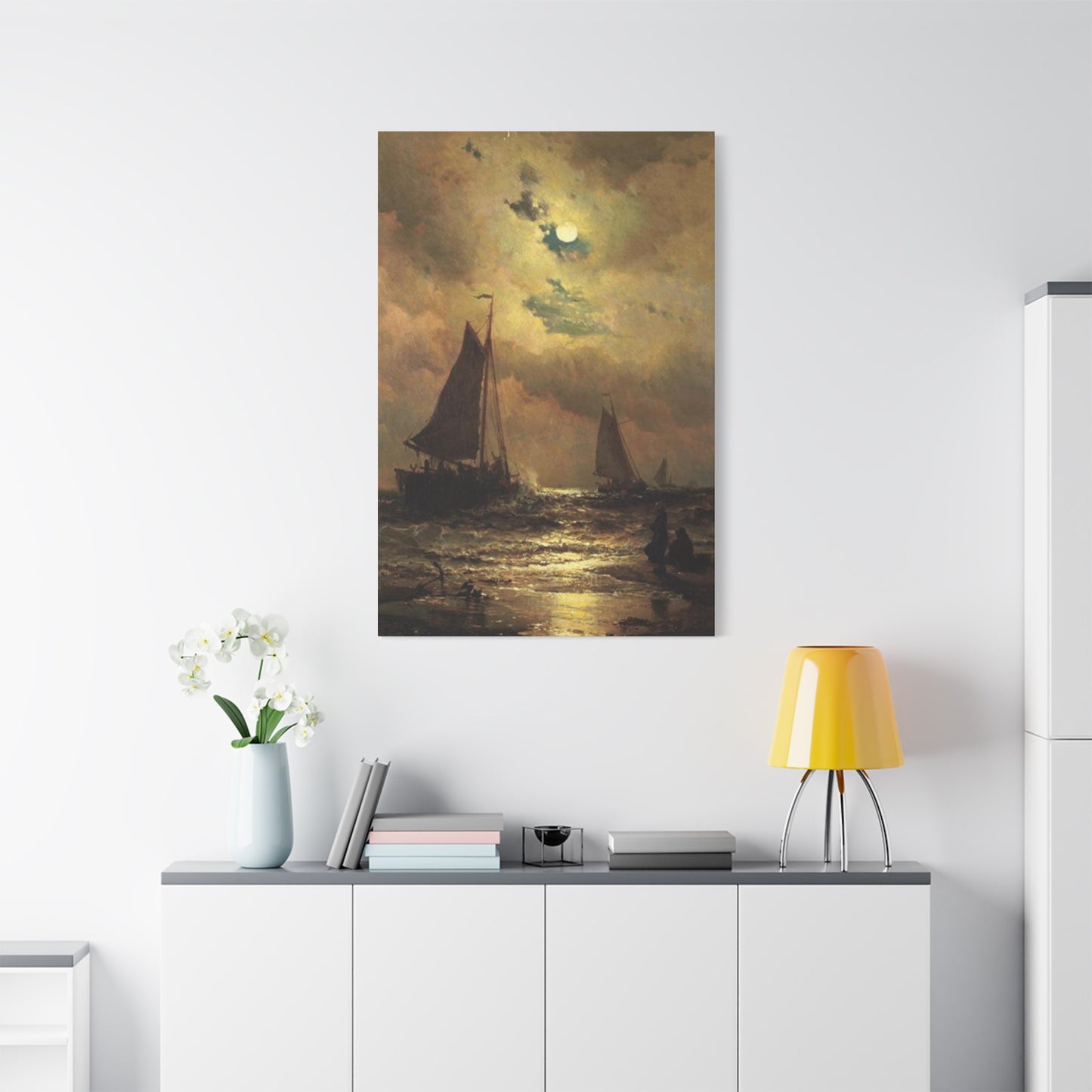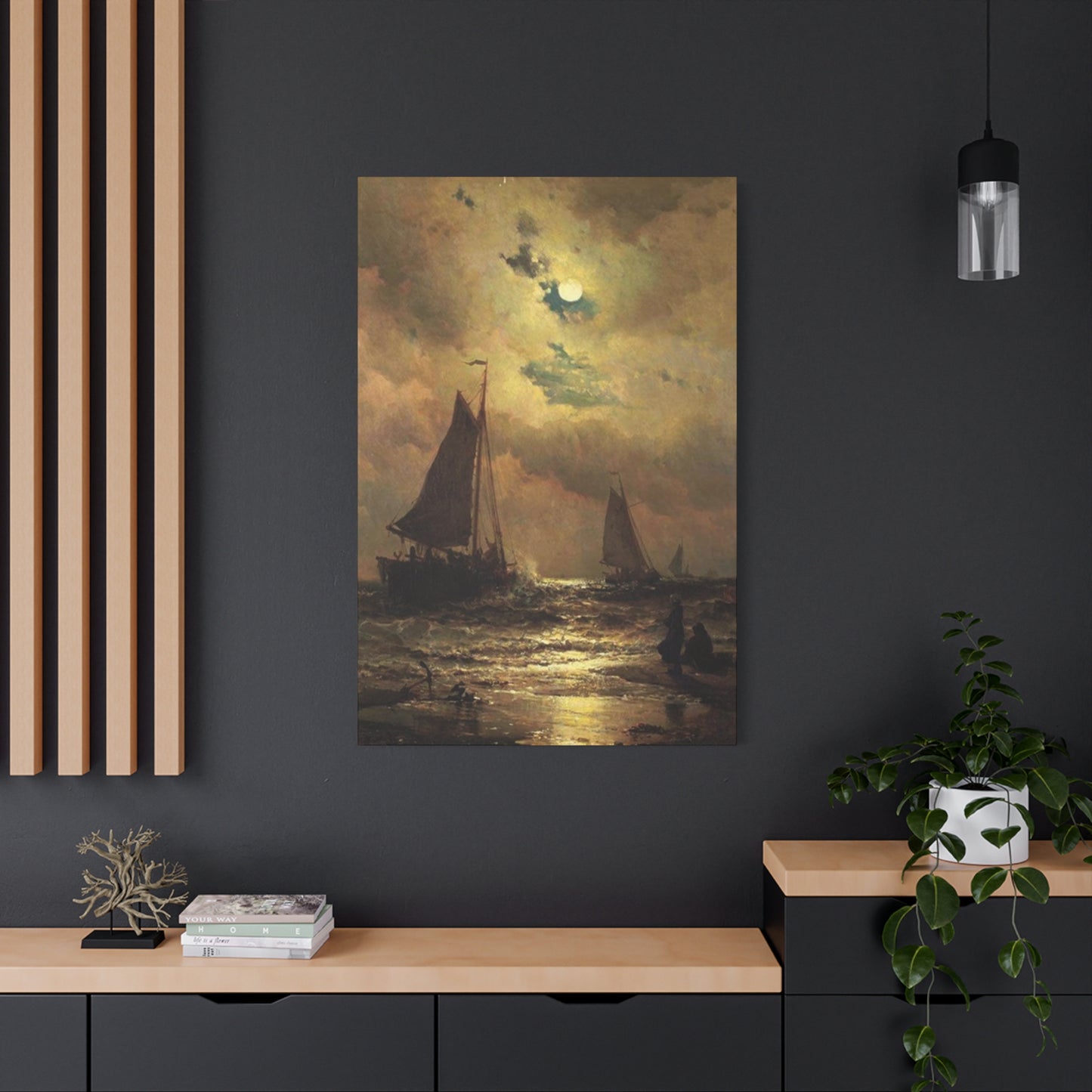Ultimate Guide to Styling, Hanging, and Curating Ship Wall Art
When you think about decorating your living space, few themes carry the romance and adventure of maritime imagery. Ship wall art has become increasingly popular among homeowners who want to capture the essence of oceanic exploration and seafaring heritage. Whether you live near the coast or hundreds of miles inland, incorporating vessel-themed decorations into your interior design can transform any room into a space that breathes wanderlust and tranquility. This comprehensive exploration will guide you through various approaches to selecting and displaying ship-themed pieces that complement your personal style while enhancing the overall ambiance of your home.
Selecting the ideal ship wall art begins with understanding the atmosphere you wish to create. For a serene, calming effect, soft watercolors or photographic prints of ships sailing on still seas work beautifully. For a more dramatic and adventurous ambiance, oil paintings depicting storms, rigging, and dynamic waves can energize a room. Scale is another important consideration: larger canvases serve as dramatic focal points, while smaller pieces are perfect for curated gallery walls or as complementary accents alongside other décor elements. Choosing the right piece ensures that your maritime artwork contributes both visually and emotionally to the space.
Proper placement enhances the impact of ship artwork. Living rooms, dining areas, and home offices benefit from a central positioning above furniture or fireplaces, where the piece becomes a natural focal point. Hallways and staircases are ideal for creating narrative displays that guide viewers through a visual journey of maritime imagery. When hanging multiple pieces, consistent spacing and alignment along eye level create balance and cohesion. Frames should complement both the artwork and the room’s décor style, whether sleek and modern, rustic, or inspired by classic nautical themes.
Ship wall art is particularly effective when curated as a thematic collection. Mixing paintings, photographs, and mixed-media pieces adds variety while maintaining a cohesive maritime narrative. Pairing ship artwork with complementary elements, such as seashells, nautical maps, or driftwood accents, reinforces the theme and transforms a simple wall into an immersive, storytelling environment. Beyond aesthetics, ships symbolize exploration, freedom, and the vastness of the open sea, inspiring imagination and reflection. By thoughtfully selecting, hanging, and curating ship wall art, homeowners can elevate any space into a nautical sanctuary, blending artistic beauty with evocative storytelling to create an unforgettable and calming interior atmosphere.
Classic Ship Art for Nautical Walls
Traditional maritime paintings have adorned the walls of homes, taverns, and galleries for centuries, capturing the majesty of vessels cutting through waves under billowing sails. These timeless pieces represent more than mere decoration; they embody humanity's relationship with the sea and our endless fascination with exploration. When you select classic ship artwork, you're choosing pieces that connect your modern space to centuries of seafaring tradition and artistic expression.
The beauty of traditional maritime paintings lies in their attention to detail and historical accuracy. Many artists who specialize in this genre spend years studying the construction of various vessel types, from mighty galleons to sleek schooners. This dedication to authenticity means that each painting tells a specific story about a particular era of naval history. You might find yourself drawn to depictions of merchant vessels from the Age of Sail, warships from famous naval battles, or fishing boats from coastal communities around the world.
One particularly appealing aspect of classic ship artwork is the variety of painting styles available. Some artists prefer the dramatic approach, showing vessels battling through storms with waves crashing over their bows and dark clouds gathering overhead. These dynamic scenes capture the danger and excitement of life at sea, creating focal points that draw the eye and spark conversation. Other artists take a more serene approach, depicting calm waters, gentle breezes, and peaceful voyages that evoke feelings of relaxation and contemplation.
The color palettes in traditional maritime paintings often reflect the natural hues of ocean environments. Deep blues and greens dominate many compositions, occasionally punctuated by the white foam of breaking waves or the warm tones of wooden hulls and canvas sails. These color schemes make classic ship artwork particularly versatile for interior design, as they can complement both neutral and more colorful room palettes without overwhelming the space.
When incorporating classic ship artwork into your home, consider the scale and proportion of both the piece and the wall where it will hang. Larger paintings work beautifully as statement pieces in spacious rooms with high ceilings, while smaller works can be grouped together to create interesting gallery arrangements. The frame you choose also matters significantly; traditional gilt frames can enhance the historical feel of the artwork, while simpler frames might help classic paintings fit more seamlessly into contemporary spaces.
The placement of classic ship artwork should take into account the room's lighting conditions. Many traditional maritime paintings were created with natural light in mind, and they often look their best when displayed where they can catch daylight throughout the day. However, if you're placing artwork in a room with limited natural light, consider adding picture lights or adjusting your ambient lighting to ensure the details and colors of the painting remain visible and vibrant.
For those who appreciate authenticity, seeking out original maritime paintings or high-quality reproductions of famous works can add significant value to your collection. Many museums and galleries have digitized their collections, allowing artists and print makers to create faithful reproductions that capture the essence of masterworks by renowned maritime painters. These reproductions make it possible to enjoy the beauty of historically significant artwork without the investment required for original pieces.
Classic ship artwork also offers educational value, especially in homes with children or in spaces where guests frequently gather. Each painting can serve as a conversation starter about naval history, shipbuilding techniques, or the lives of sailors from different eras. This educational dimension adds depth to the decorative function of the artwork, making it both beautiful and intellectually enriching.
Bring the Ocean Home with Ship Prints
Printed maritime imagery offers an accessible entry point for anyone looking to incorporate seafaring themes into their living spaces. Unlike original paintings or commissioned works, prints provide an affordable way to experiment with different styles, subjects, and arrangements without significant financial commitment. The world of ship prints encompasses everything from exact reproductions of historical illustrations to contemporary artistic interpretations that reimagine maritime subjects through modern lenses.
High-quality ship prints have evolved dramatically with advances in printing technology. Modern giclée printing processes can reproduce artwork with such fidelity that distinguishing a print from an original becomes nearly impossible at typical viewing distances. This technological progress means that even those working with modest decorating budgets can enjoy museum-quality imagery in their homes. The range of printing surfaces available has also expanded, with options including traditional paper, canvas, metal, acrylic, and even wood, each offering unique aesthetic qualities.
One advantage of choosing prints over other forms of ship artwork is the ease with which you can update your decor. As your tastes evolve or as you redecorate different spaces in your home, swapping out prints requires minimal effort and expense compared to replacing larger or more permanent installations. This flexibility makes prints particularly appealing for renters or for those who enjoy frequently refreshing their interior design.
The variety of ship prints available means you can find imagery suitable for virtually any room in your home. Detailed technical drawings of famous vessels work beautifully in home offices or studies, where their precise lines and annotations add an element of intellectual curiosity. Softer, more impressionistic depictions of sailing ships might be perfect for bedrooms or reading nooks, where their calming presence promotes relaxation. Bold, graphic interpretations of maritime subjects can enliven kitchens, dining rooms, or entryways with their energy and visual impact.
Many contemporary artists are creating stunning ship prints that blend traditional maritime subjects with modern artistic techniques. Some incorporate mixed media elements, combining photography with illustration or layering different printing methods to create depth and texture. Others use digital tools to manipulate colors and compositions in ways that would be difficult or impossible to achieve through traditional painting methods. These innovative approaches keep ship artwork feeling fresh and relevant while still honoring the rich heritage of maritime art.
When selecting ship prints for your space, consider the overall narrative you want to create. A series of prints depicting different types of sailing vessels can educate viewers about maritime history while creating visual interest through variety. Alternatively, multiple prints showing the same subject from different perspectives or at different times of day can create a cohesive, meditative quality that works beautifully in spaces dedicated to relaxation or contemplation.
The matting and framing choices you make for ship prints significantly impact their final appearance and how well they integrate with your existing decor. Simple, clean frames allow the artwork itself to take center stage, making this approach ideal for spaces with eclectic or busy design schemes. More elaborate frames can elevate prints to feel more substantial and luxurious, which works well in formal settings or when you want to create the impression of a more expensive piece.
For those interested in collecting, limited edition prints from respected maritime artists can appreciate in value over time while providing immediate aesthetic pleasure. Many artists number and sign their limited runs, providing documentation of authenticity that appeals to serious collectors. Even if you're not concerned with investment potential, limited editions offer the satisfaction of owning something special and less common than mass-produced alternatives.
Vintage Ships, Timeless Style
Authentic vintage ship artwork carries a unique character that contemporary pieces, no matter how skillfully executed, struggle to replicate. The patina of age, the slightly faded colors, and the occasional imperfections in older prints or paintings all contribute to an aesthetic that speaks of history and endurance. When you incorporate genuine vintage maritime artwork into your home, you're not just decorating; you're preserving and honoring pieces of cultural heritage that connect us to previous generations.
Finding authentic vintage ship artwork requires patience and often some detective work. Estate sales, antique shops, and specialized maritime auctions represent prime hunting grounds for those seeking original pieces from earlier eras. The thrill of discovery adds an element of adventure to the decorating process, as you never know when you might stumble upon a forgotten treasure in an unexpected place. Online marketplaces have also made it easier to locate vintage maritime artwork, though careful attention to seller reputation and item condition becomes essential when purchasing sight unseen.
The condition of vintage artwork varies considerably, and part of the appeal lies in deciding how much restoration, if any, you want to pursue. Some collectors prefer to leave pieces exactly as found, appreciating the signs of age as part of the artwork's story. Others choose to have items professionally cleaned and restored to bring back colors and details that time has obscured. There's no right answer to this question; it depends entirely on your personal preferences and the specific condition of each piece.
Vintage maritime prints from the late nineteenth and early twentieth centuries represent a particularly rich category of collectible artwork. During this period, advances in printing technology made high-quality color reproductions widely available, while the subject matter of ships and sailing remained enormously popular with the general public. Prints from this era often feature bold colors, strong compositional elements, and a level of detail that reflects the pride and craftsmanship of their creators.
One fascinating subset of vintage ship artwork includes advertising materials from steamship companies, cruise lines, and naval recruiting campaigns. These pieces combine maritime imagery with the distinctive graphic design sensibilities of their respective eras, creating items that function as both art and historical documents. Travel posters from the golden age of ocean liners, for instance, evoke glamour and adventure while showcasing the impressive vessels that once dominated transatlantic routes.
Incorporating vintage ship artwork into contemporary interiors creates fascinating juxtapositions that highlight both the old and new elements of your design. A weathered maritime painting can add warmth and character to an otherwise stark modern space, while the clean lines of contemporary furniture can provide an effective counterpoint to the ornate details of vintage pieces. This interplay between different design eras creates spaces that feel layered, thoughtful, and personal rather than merely following current trends.
The frames on vintage ship artwork often constitute significant artistic works in their own right. Ornate period frames can enhance the overall impact of a piece, and many collectors specifically seek out artwork that retains its original framing. However, if the original frame is damaged, missing, or simply doesn't suit your aesthetic preferences, reframing vintage artwork with care and respect for its age can help it fit more comfortably into your space while still preserving its essential character.
When displaying vintage maritime artwork, consider the environmental factors that might affect its longevity. Extreme temperatures, high humidity, and direct sunlight can all accelerate deterioration of older pieces. Choosing appropriate locations within your home and using UV-protective glass in frames helps ensure that these treasures from the past remain enjoyable for years to come. Some particularly valuable or fragile items might be better suited to rotating displays, allowing you to enjoy them periodically while minimizing their exposure to potentially damaging conditions.
Modern Homes, Maritime Vibes
Contemporary interior design doesn't have to exclude maritime themes, and in fact, ship artwork can provide exactly the kind of unique, personality-driven element that prevents modern spaces from feeling sterile or impersonal. The key lies in selecting and presenting nautical pieces in ways that complement rather than conflict with contemporary design principles. Clean lines, thoughtful color coordination, and strategic placement all contribute to successfully incorporating ship artwork into modern homes.
Abstract interpretations of maritime subjects work particularly well in contemporary settings. Artists who distill the essence of ships and seas into simplified forms, bold color blocks, or geometric patterns create pieces that read as unmistakably nautical without relying on literal representations. These abstract works bridge the gap between traditional maritime themes and modern aesthetic sensibilities, offering the best of both worlds for homeowners who want to acknowledge their love of the sea without compromising their contemporary design vision.
The use of unexpected materials in ship artwork can also help these pieces feel at home in modern interiors. Metal sculptures of sailing vessels, for instance, bring industrial chic to maritime subjects, while artwork incorporating reclaimed wood or rope connects to nautical traditions through materials rather than through pictorial representation. These material-focused approaches to maritime decoration feel fresh and contemporary while still clearly referencing seafaring heritage.
Color selection plays a crucial role when incorporating ship artwork into modern spaces. While traditional maritime paintings often feature realistic color palettes dominated by blues and earth tones, contemporary maritime art frequently employs unexpected color combinations that create visual interest and tie into modern color schemes. A ship rendered in monochromatic gray tones might complement a minimalist interior, while bold, saturated colors could add energy to an otherwise neutral space.
Scale considerations become particularly important in modern homes, where open floor plans and high ceilings create expansive wall surfaces that demand appropriately sized artwork. Oversized ship prints or paintings can serve as dramatic focal points in these spaces, anchoring the room and providing visual weight that balances the architecture. Conversely, in areas with more intimate proportions, smaller pieces or thoughtful groupings of maritime imagery maintain presence without overwhelming the space.
The juxtaposition of old and new represents another effective strategy for incorporating ship artwork into contemporary homes. A vintage maritime chart displayed alongside modern abstract pieces creates an interesting dialogue between different artistic approaches and time periods. This curated, eclectic approach to wall decoration reflects sophisticated design thinking and creates spaces that feel personal and thoughtfully composed rather than simply following a single decorative theme.
Lighting design significantly impacts how ship artwork reads in modern interiors. Track lighting, picture lights, or even integrated LED strips can highlight maritime pieces while contributing to the overall lighting scheme of the space. In homes with smart lighting systems, the ability to adjust brightness and color temperature allows you to change the mood and appearance of ship artwork throughout the day, keeping the display dynamic and responsive to different activities and times.
For those committed to minimalism, even a single carefully chosen piece of ship artwork can satisfy the desire for nautical elements without cluttering the clean aesthetic that defines the style. A striking black and white photograph of a sailing vessel, for instance, provides visual interest and personal meaning while adhering to minimalist principles of simplicity and restraint. The key is to select pieces that truly resonate with you rather than feeling obligated to incorporate numerous maritime elements into your space.
Canvas Ship Art That Captivates
Canvas as a medium for ship artwork offers particular advantages that make it a popular choice for contemporary decorating. The texture of canvas adds depth and visual interest that flat prints on paper simply cannot match. When ship imagery is printed or painted on canvas, it gains a sense of substance and permanence that elevates the work beyond simple decoration to something that feels more like investment artwork.
Gallery-wrapped canvases, where the printed or painted image extends around the sides of the frame, have become especially popular in recent years. This presentation style eliminates the need for traditional framing, creating a clean, modern look that works beautifully in contemporary interiors. The depth created by the stretcher bars behind the canvas gives these pieces a sculptural quality that helps them stand out from the wall, creating subtle shadows that add to their visual impact.
The size options available with canvas prints make them particularly versatile for different spaces. Small canvas pieces work beautifully in groupings or as part of gallery walls, while large-scale canvases can command attention as standalone statement pieces. Multi-panel canvas sets, sometimes called triptychs or polyptychs depending on the number of panels, allow for dramatic presentations of ship imagery that can span entire walls, creating immersive visual experiences.
One appealing aspect of canvas ship artwork is how it can incorporate various artistic styles and techniques. Photographic images transferred to canvas gain painterly qualities from the texture of the material, while digital illustrations and paintings maintain their crispness and color saturation. Some artists even use canvas as a base for mixed media work, incorporating painted elements, collage, or three-dimensional objects to create truly unique maritime pieces.
The durability of canvas makes it suitable for various locations within the home, including spaces where other types of artwork might be more vulnerable. While you should still avoid placing canvas art in areas with extreme humidity or direct water exposure, the sturdy nature of properly treated canvas means these pieces can handle the normal environmental fluctuations that occur in lived-in homes better than some more delicate artworks.
Custom canvas printing has made it possible for homeowners to create personalized ship artwork that holds specific meaning for them. Family sailboats, vessels from memorable vacations, or ships that figure prominently in personal or family history can all be transformed into canvas art. This customization option allows you to incorporate maritime themes in ways that feel deeply personal rather than simply decorative.
The color reproduction capabilities of modern canvas printing ensure that ship artwork maintains its visual impact and accuracy. High-quality canvas prints capture subtle gradations in color and fine details that bring maritime scenes to life. Whether you're displaying a dramatic seascape with a ship battling through stormy seas or a peaceful harbor scene at sunset, canvas reproduction technology can faithfully convey the artist's original vision.
For those interested in original artwork, canvas remains a favorite medium among contemporary maritime artists. The surface accepts various painting techniques beautifully, from detailed realistic work to loose, expressive brushstrokes. Investing in an original canvas painting by a maritime artist not only supports living artists but also gives you a truly unique piece that no one else in the world possesses.
Sailboats in Soft Watercolors
Watercolor paintings of sailboats possess a distinctive ethereal quality that sets them apart from works in other media. The translucent nature of watercolors creates luminous effects that perfectly capture the interplay of light, water, and canvas sails. When an artist depicts sailing vessels in watercolor, the resulting images often convey a sense of movement and atmosphere that feels immediate and alive, as if you're witnessing the scene unfold in real time.
The soft edges and flowing color transitions characteristic of watercolor technique suit maritime subjects particularly well. Water itself becomes easier to represent convincingly when rendered in a medium that shares its fluidity. The way watercolor pigments blend and bloom on paper can suggest the reflections, ripples, and transparency of water more naturally than the harder edges typically found in other painting media.
Sailboat watercolors work beautifully in spaces where you want to create a calming, peaceful atmosphere. The gentle color palettes and soft focus of many watercolor works promote relaxation and contemplation, making them ideal for bedrooms, bathrooms, reading nooks, or meditation spaces. Even when depicting more dramatic scenes, watercolors maintain a certain delicacy that prevents them from feeling heavy or overwhelming in intimate spaces.
The variety of approaches watercolor artists take to maritime subjects ensures you can find pieces that match your aesthetic preferences. Some artists work in loose, impressionistic styles that suggest sailboats and seas through minimal brushstrokes and color washes, while others employ tighter techniques that capture considerable detail within the watercolor medium. Traditional approaches might emphasize realistic color and light, while contemporary watercolorists might use unexpected color combinations or abstraction to create more interpretive works.
Collecting original watercolor paintings of sailboats can become an engaging hobby in its own right. Watercolors generally cost less than comparable oil paintings due to the materials involved and the traditional hierarchy of artistic media, making them accessible to collectors with various budgets. Many talented watercolor artists sell their maritime works through galleries, art fairs, online platforms, and even directly from their studios, providing numerous opportunities to discover and acquire pieces that speak to you.
The framing and presentation of watercolor sailboat paintings deserves careful consideration. Watercolors require protection from environmental factors that can cause fading or damage, so using UV-protective glass or acrylic in frames becomes particularly important. The matting you choose can significantly impact the overall appearance of the piece; subtle, neutral mats often work well with the soft colors of many watercolor sailboat paintings, though sometimes a more colorful mat can draw out specific hues in the artwork.
Grouping multiple watercolor sailboat paintings together creates beautiful gallery walls that showcase the medium's versatility. You might assemble a collection showing different types of sailing vessels, various weather conditions, or multiple interpretations of similar scenes by different artists. The cohesive medium ties the collection together even when individual pieces vary in style or subject matter, creating visual harmony that works well in both traditional and contemporary interiors.
For those with artistic inclinations, watercolor painting offers an accessible entry point for creating your own sailboat artwork. The basic materials remain relatively inexpensive, and numerous tutorials and classes can help beginners develop their skills. Creating your own watercolor sailboat paintings adds an extra layer of personal meaning to your wall decor while providing a creative outlet and deeper appreciation for the work of professional maritime watercolorists.
Wooden Ship Art for Rustic Rooms
Wooden ship artwork brings tactile, three-dimensional elements into maritime decoration, adding depth and texture that two-dimensional pieces cannot provide. These works might take the form of carved relief panels, assembled driftwood sculptures, intricate ship models mounted for wall display, or even sections of actual vessels repurposed as decorative pieces. The natural warmth and organic character of wood makes it particularly well-suited to rustic interior styles, though wooden ship art can be adapted to work in various design contexts.
Carved wooden ship panels represent a traditional folk art form that has been practiced in coastal communities around the world for generations. These hand-carved pieces often display remarkable craftsmanship, with intricate details representing rigging, planking, and other vessel features rendered in relief. The dimensionality of carved work creates interesting shadows and highlights that change throughout the day as lighting conditions shift, keeping the artwork dynamic and engaging.
Driftwood ship sculptures embrace the organic, weathered aesthetic that appeals to those who love coastal and rustic design. Artists who work with driftwood select pieces with interesting shapes and textures, assembling them into recognizable vessel forms that celebrate both maritime subjects and the beauty of natural materials. These sculptures often retain the silvered, salt-worn appearance of wood that has spent time in the ocean, bringing literal pieces of the marine environment into your home.
Ship wheel sections, salvaged planking, or other architectural elements from actual boats can be mounted and displayed as wall art that carries authentic maritime heritage. These pieces connect viewers to the real vessels they once were part of, creating a tangible link to seafaring history. The patina, wear patterns, and construction details visible in these salvaged elements tell stories about the boats they came from and the waters they once sailed.
Creating wooden ship art through assemblage techniques allows for considerable creativity and personal expression. Some artists combine various types and colors of wood to build up maritime images, using the different tones and grains as a palette to create pictures of ships and seas. Others incorporate additional materials like rope, metal fittings, or canvas alongside wood, creating mixed media pieces that reference actual shipbuilding materials and techniques.
The rustic character of wooden ship art makes it a natural choice for cabins, lake houses, beach cottages, and other casual or vacation homes. However, wooden maritime pieces can also bring welcome warmth and texture to more formal or urban spaces, where they provide counterpoint to sleeker materials like glass, metal, or stone. The key to successfully incorporating wooden ship art into various settings lies in considering scale, finish, and how the piece relates to other elements in the room.
Finishing and treatment of wooden ship art affects both its appearance and longevity. Some pieces look best with natural or minimally finished wood that showcases the material's inherent color and grain. Others benefit from staining, painting, or distressing techniques that create specific aesthetic effects or help the piece coordinate with existing decor. In humid environments, proper sealing helps protect wooden artwork from warping or deterioration over time.
For those who appreciate maritime history and craftsmanship, collecting antique half-hull ship models represents a specialized but rewarding pursuit. These models, traditionally used by shipbuilders to work out vessel designs before full construction, display beautiful lines and construction details when mounted on walls. Many collectors find the combination of functional maritime history and aesthetic appeal irresistible, building collections that trace the evolution of ship design across different eras and vessel types.
Black & White Ships, Bold Walls
Monochromatic ship artwork possesses a graphic intensity and timeless quality that colored pieces sometimes lack. By stripping away color, black and white maritime images direct viewer attention to composition, form, contrast, and detail. The result is often stark, dramatic, and surprisingly versatile, capable of making strong visual statements in both traditional and contemporary interiors.
High-contrast black and white ship photographs capture maritime subjects with documentary clarity and artistic vision. Whether showing historic sailing vessels, working ships, or recreational sailboats, black and white photography emphasizes shapes, textures, and the play of light and shadow. This approach can make even familiar subjects appear fresh and interesting, revealing aspects that might be overlooked in color images. The absence of color also tends to give photographs a timeless quality, making it difficult to determine exactly when the image was captured.
Pen and ink drawings of ships represent another traditional approach to monochromatic maritime art. The precision possible with pen and ink makes this medium ideal for capturing the complex rigging, detailed deck structures, and intricate hull designs of sailing vessels. Many historic ship illustrations were created in pen and ink for nautical publications and documentation, and contemporary artists continue this tradition while sometimes introducing more expressive or stylized approaches to the medium.
Silhouette ship art takes the monochromatic concept to its extreme, showing vessels as pure black shapes against lighter backgrounds. This stripped-down approach can be remarkably effective, particularly when the chosen ships have distinctive profiles that remain recognizable even in silhouette. Series of different vessel silhouettes arranged together create interesting pattern and rhythm while educating viewers about the variety of ship types that have existed throughout maritime history.
The versatility of black and white ship artwork makes it adaptable to nearly any interior color scheme. Since these pieces don't introduce additional colors into a space, they won't clash with existing palettes and can actually help tie together rooms that incorporate various colors. This neutrality makes monochromatic maritime art particularly appealing for those who like to change their decor frequently or who want flexibility in their decorating choices.
Modern digital illustration techniques have expanded the possibilities for creating striking black and white ship art. Artists can create crisp vector graphics, intricate halftone patterns, or experimental effects that would be difficult or impossible to achieve with traditional media. These contemporary approaches to monochromatic maritime art feel fresh and current while still honoring the long tradition of black and white ship imagery.
The framing choices you make for black and white ship artwork significantly impact its overall effect. Simple black or white frames often work beautifully, creating clean presentations that let the artwork speak for itself. However, metallic frames, natural wood, or even colored frames can create interesting effects depending on your specific piece and the surrounding decor. The matting also plays a role; crisp white mats can brighten pieces and create clear separation from the wall, while black or gray mats might create a more cohesive, unified appearance.
When displaying black and white ship artwork, consider how it will interact with the wall color behind it. These pieces often look stunning against colored walls, where the contrast between the monochromatic art and the colored background creates visual drama. However, black and white ship art also works beautifully on white or neutral walls, where the pieces seem to float in space and command attention through their graphic strength rather than through color contrast.
Coastal Decor Starts with a Ship
Building a cohesive coastal decorating scheme often begins with selecting a strong focal point that sets the tone for everything that follows. Ship artwork serves this anchoring role beautifully, establishing the maritime theme while providing a specific visual direction that influences subsequent decorating decisions. Starting with the right piece of ship art helps ensure that your coastal decor feels intentional and well-composed rather than randomly assembled.
When choosing ship artwork to anchor your coastal decorating scheme, consider what specific aspects of maritime life and coastal living you want to emphasize. Are you drawn to the adventure and exploration associated with historic sailing vessels? Do you prefer the relaxed, leisure-oriented associations of recreational sailboats? Or does the working maritime tradition of fishing boats and commercial vessels appeal to you? The specific type of ship you feature will subtly influence the overall feel of your coastal decor.
The color palette established by your chosen ship artwork provides guidance for coordinating other decorative elements in the space. If your maritime piece features the classic navy and white combination, these colors can repeat throughout the room in fabrics, accessories, and other decorative objects. Artwork with warmer tones might inspire a coastal palette that incorporates sandy beiges, soft corals, and weathered wood tones. Even unexpected color choices in ship artwork can work beautifully when echoed thoughtfully throughout the space.
Scale relationships between your ship artwork and other decorative elements help create visual balance in coastal rooms. A large, dramatic maritime piece might serve as the undisputed focal point, with smaller accessories and decorative objects supporting rather than competing with it. Conversely, a more modest ship print might anchor a gallery wall or vignette that includes other maritime elements like shells, rope, nautical instruments, or beach finds.
Layering different types of maritime and coastal elements creates depth and interest in rooms anchored by ship artwork. Beyond the primary ship piece, you might incorporate nautical charts, lighthouse photographs, seascape paintings, or even three-dimensional objects like oars, buoys, or ship models. The key is maintaining enough consistency to create cohesion while allowing enough variety to prevent the space from feeling repetitive or themed in an overly literal way.
Textile choices in coastal rooms with ship artwork should complement and enhance the maritime theme without overwhelming it. Striped patterns echo nautical flags and sailor uniforms, while rope and knot motifs directly reference ship rigging. Natural fiber textiles like linen and cotton feel appropriate in coastal settings and provide textural variety that keeps spaces from appearing flat or one-dimensional. Even the texture of fabrics can contribute to the coastal feel, with slubbed weaves and loosely woven materials evoking casual beach house comfort.
Furniture selection and arrangement should support and display your ship artwork effectively while contributing to the overall coastal aesthetic. In formal settings, traditional furniture with nautical details like rope carved legs or anchor hardware can complement ship artwork beautifully. More casual coastal spaces might pair ship art with weathered wood furniture, wicker pieces, or contemporary designs in beach-appropriate materials and colors.
The success of coastal decor centered on ship artwork ultimately depends on achieving the right balance between themed decoration and livable, personal spaces. Rooms that feel like museum exhibits or retail store displays lack the warmth and individuality that make houses feel like homes. By choosing ship artwork that genuinely appeals to you and building your coastal decor thoughtfully around it, you create spaces that express your interests and personality while remaining comfortable and welcoming to family and guests.
Add Depth with 3D Ship Wall Pieces
Three-dimensional ship wall art creates visual interest and physical depth that two-dimensional pieces simply cannot achieve. These sculptures, relief carvings, shadow boxes, and constructed pieces literally project from the wall, creating shadows and changing appearances as lighting conditions and viewing angles shift throughout the day. For those seeking maritime wall decor that makes a strong impact and invites closer inspection, dimensional ship pieces offer compelling options.
Metal ship wall sculptures have become increasingly popular in contemporary maritime decor. Artists working in copper, steel, brass, or mixed metals create pieces ranging from realistic vessel representations to abstract interpretations of maritime themes. The inherent strength of metal allows for delicate, intricate work that might be impossible in other materials, such as detailed rigging or thin masts that appear to float away from the background. Metal sculptures can be finished in various ways, from polished surfaces that catch light to deliberately oxidized patinas that evoke weathered, sea-exposed materials.
Shadow box displays offer opportunities to create custom three-dimensional ship art that holds personal meaning. These deep-set frames can house actual ship models, maritime artifacts, nautical instruments, rope work, or carefully arranged collections of beach finds and sailing memorabilia. The depth of the box allows for creative layering and positioning of objects, creating scenes that tell stories about personal connections to maritime life or simply celebrating the beauty of nautical objects.
Layered wooden ship art represents another approach to dimensional wall pieces. By cutting identical or similar ship shapes from different pieces of wood and mounting them at slightly offset positions with space between layers, artists create depth and shadow effects that give the impression of movement or multiple vessels. This technique works particularly well with silhouetted ship profiles, where the simplified shapes read clearly even when layered and cast subtle shadows on each other.
Wire ship sculptures offer airy, delicate interpretations of maritime subjects that seem to float on walls rather than weighing them down. Skilled artists bend and shape wire to suggest vessel forms, sometimes adding sails made from mesh or translucent materials that interact beautifully with light. These ethereal pieces work particularly well in spaces where you want maritime references that don't dominate or darken the room.
Bas-relief ship carvings occupy a middle ground between two-dimensional images and fully three-dimensional sculptures. In these pieces, ship forms emerge partially from flat backgrounds, creating subtle but effective depth. The technique has deep historical roots in architectural decoration and commemorative plaques, and it continues to appeal to those who appreciate traditional craftsmanship and the way relief carving creates interesting interplays of light and shadow.
Contemporary artists are pushing the boundaries of dimensional ship wall art by incorporating unexpected materials and techniques. Some create pieces that combine traditional crafts like model shipbuilding with modern materials like resin, LED lighting, or digital elements. Others construct ship forms from found objects, recycled materials, or components that reference but don't literally represent maritime subjects. These innovative approaches keep the genre feeling fresh and relevant to current aesthetic sensibilities.
Installing dimensional ship wall art requires more consideration than hanging flat pictures, but the extra effort rewards you with pieces that create genuine visual interest and contribute to the sculptural quality of your space. Proper mounting hardware becomes crucial, as three-dimensional pieces often weigh more than flat artwork and need secure attachment to ensure safety. Lighting placement also deserves attention, as the shadows cast by dimensional pieces can either enhance or detract from their appearance depending on light position and quality.
Sailing Ships for Office Calm
Professional work environments benefit enormously from thoughtful decoration that enhances productivity while reducing stress. Sailing ship artwork brings specific qualities to office spaces that support focused work and mental clarity. The association of ships with exploration, navigation, and reaching distant destinations resonates with professional goals and ambitions, while the maritime setting provides mental relief from the often artificial and constraining atmosphere of typical office environments.
Research on workplace environments consistently shows that access to natural imagery and scenes reduces stress and improves cognitive function. While you might not have windows overlooking actual harbors or coasts in your office, ship artwork provides visual connection to natural environments that offers some of the same benefits. Looking up from your work to see a beautifully rendered sailing vessel against a vast sky or ocean can provide mental respite that helps you return to tasks with renewed focus and energy.
The colors typically found in sailing ship artwork tend to support rather than distract from concentration. Blues and greens, which dominate many maritime pieces, are known to promote calmness and focus. These cool colors can help balance workspaces that might otherwise feel too warm or energizing, creating environments conducive to sustained attention. Even when ship artwork incorporates warmer tones, the presence of sky and water elements usually keeps the overall effect relatively calming.
Choosing specific types of sailing ship imagery for office environments can subtly reinforce professional values and aspirations. Vessels shown navigating challenging conditions might serve as reminders of persistence and resilience during difficult projects. Ships in full sail catching favorable winds could symbolize the importance of capitalizing on opportunities and maintaining momentum. Harbor scenes showing ships at anchor might represent goals achieved or the importance of rest and preparation between ventures.
The scale of ship artwork in offices should suit the space without overwhelming it or disappearing into insignificance. In private offices with limited wall space, a single well-chosen piece that resonates with you personally often works better than multiple smaller pieces that compete for attention. In larger offices or conference rooms, more substantial ship artwork or gallery wall arrangements can help define the space and create focal points that support the room's professional function.
Framing and presentation choices for office ship artwork should reflect the professional nature of the setting while allowing for personal expression. Clean, simple frames in classic colors like black, silver, or wood tones generally work well in office environments, providing polish without distraction. The artwork itself can introduce personality and interest, while the framing maintains professional appropriateness.
Conclusion:
Ship wall art captures the romance, adventure, and timeless elegance of the sea, transforming interiors into spaces that evoke exploration, freedom, and serenity. From classic sailing vessels to modern yachts, from stormy seas to calm harbors, ship-themed artwork brings a sense of motion, history, and narrative into your home. These pieces do more than decorate walls—they tell stories, inspire wanderlust, and celebrate humanity’s enduring connection with the ocean.
The appeal of nautical-inspired décor lies in its versatility and emotional resonance. Ship wall art works beautifully in coastal homes, modern apartments, or even traditional interiors, providing a thematic anchor that conveys elegance and adventure. Large canvases of majestic ships at sea create dramatic focal points, while smaller prints or framed sketches can be arranged in galleries to craft a narrative of maritime life. Whether rendered in oil paintings, digital art, or photography, ship imagery adds depth, movement, and a sense of scale, enhancing the visual appeal of any room.
From a design perspective, ship wall art integrates seamlessly with complementary elements such as wood textures, rope accents, navy-blue hues, and brass details. These pieces can be paired with vintage maps, model ships, or coastal-inspired furnishings to create cohesive, immersive spaces. The combination of maritime imagery and natural textures evokes calm and sophistication, allowing interiors to feel curated and purposeful while simultaneously inspiring curiosity and imagination.
Beyond aesthetics, ship wall art carries symbolic significance. Ships have long represented journeys, resilience, exploration, and ambition. Displaying maritime artwork in your home is a subtle reminder of these values, encouraging viewers to embrace life’s challenges, navigate uncertainty, and pursue their own adventures. This symbolic layer makes ship-themed décor not only visually appealing but emotionally meaningful, adding depth and context to interior spaces.
Moreover, the artistic interpretation of ships allows for endless creativity. Artists often play with light, perspective, and water movement to create dynamic compositions that evoke motion and drama. Some focus on realistic, historically accurate representations, while others use abstract or minimalist approaches to capture the essence of sailing and the spirit of the sea. This flexibility ensures that ship wall art can suit a wide variety of design preferences and moods—from serene and contemplative to bold and adventurous.
Ultimately, ship wall art elevates interiors by combining narrative, beauty, and emotional resonance. It turns walls into stories of exploration, strength, and elegance, making each glance at the artwork a reminder of adventure and aspiration. Whether displayed as a central statement piece or as part of a curated gallery, ship-themed art brings sophistication, inspiration, and maritime charm into any living space.
In essence, embracing ship wall art is more than a design choice—it is an invitation to connect with the spirit of the ocean, celebrate exploration, and enrich your home with beauty, symbolism, and timeless elegance. It transforms interiors into spaces that feel both inspiring and harmonious, where the allure of the sea is ever-present and every wall tells a story of adventure.

















